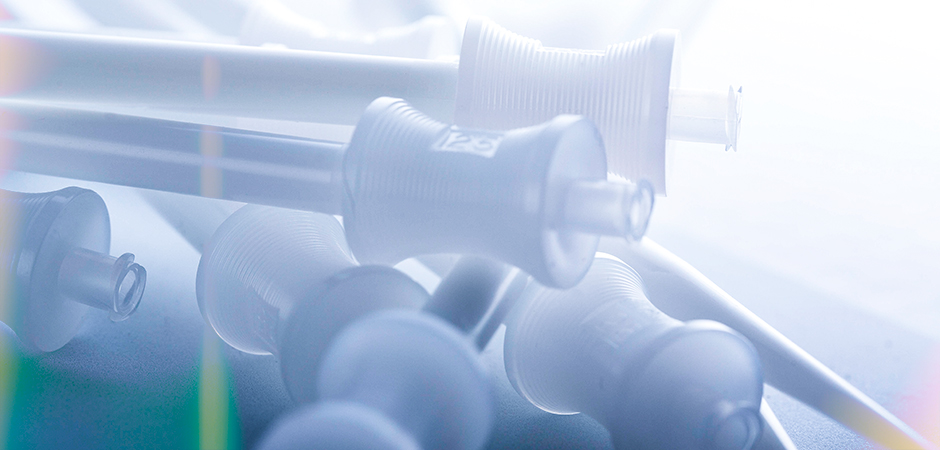
Polyolefins are a family of polymers produced from a simple olefin (also called an alkene) as a monomer. The two most common classes are polyethylene (PE) and polypropylene (PP). Polyolefins are used in a wide range of medical applications including dilators, introducers, packaging, film, and molded components. They generally offer good biocompatibility, chemical resistance, and lubricity while offering acceptable tensile and impact properties. However, care needs to be taken when evaluating the sterilization of the materials as they have limited temperature and radiation resistance.
The most common product families include:
- HDPE: High Density Polyethylene is defined by a density of greater or equal to 0.941 g/cm3. HDPE has a low degree of branching and thus stronger intermolecular forces and tensile strength. HDPE is typically injection molded.
- LDPE: Low Density Polyethylene is defined by a density range of 0.910–0.940 g/cm3. LDPE has a high degree of short and long chain branching, which means that the chains do not pack into the crystalline structure, which results in less strong intermolecular forces compared to HDPE. It is typically used in packaging applications.
- LLDPE: Linear Low Density Polyethylene is defined by a density range of 0.915–0.925 g/cm3. LLDPE is a substantially linear polymer with significant numbers of short branches, commonly made by the copolymerization of ethylene with short-chain alpha-olefins (hexene or octene). LLDPE has higher tensile strength and impact resistance than LDPE. LLDPE is used predominantly in film and extrusion applications.
- UHMW: Ultra-High Molecular Weight polyethylene has excellent lubricity and chemical compatibility. It is hot melt processable and is typically machined from billet stock.
- PP: Polypropylene offers limited toughness and is used in a variety of chemical resistant applications. It is susceptible to UV radiation and must be modified to prevent polymer degradation.
- PP Copolymers: PP copolymers are typically modified with polyethylene to improve impact properties and stability.
- TPO/POE: Elastomeric polyolefins can be made via the blending of PE, PP, and rubber (EPDM, EPR, EO, EB, SEBS). This class of polyolefin has hard and elastomeric segments providing excellent elongation and durability.
